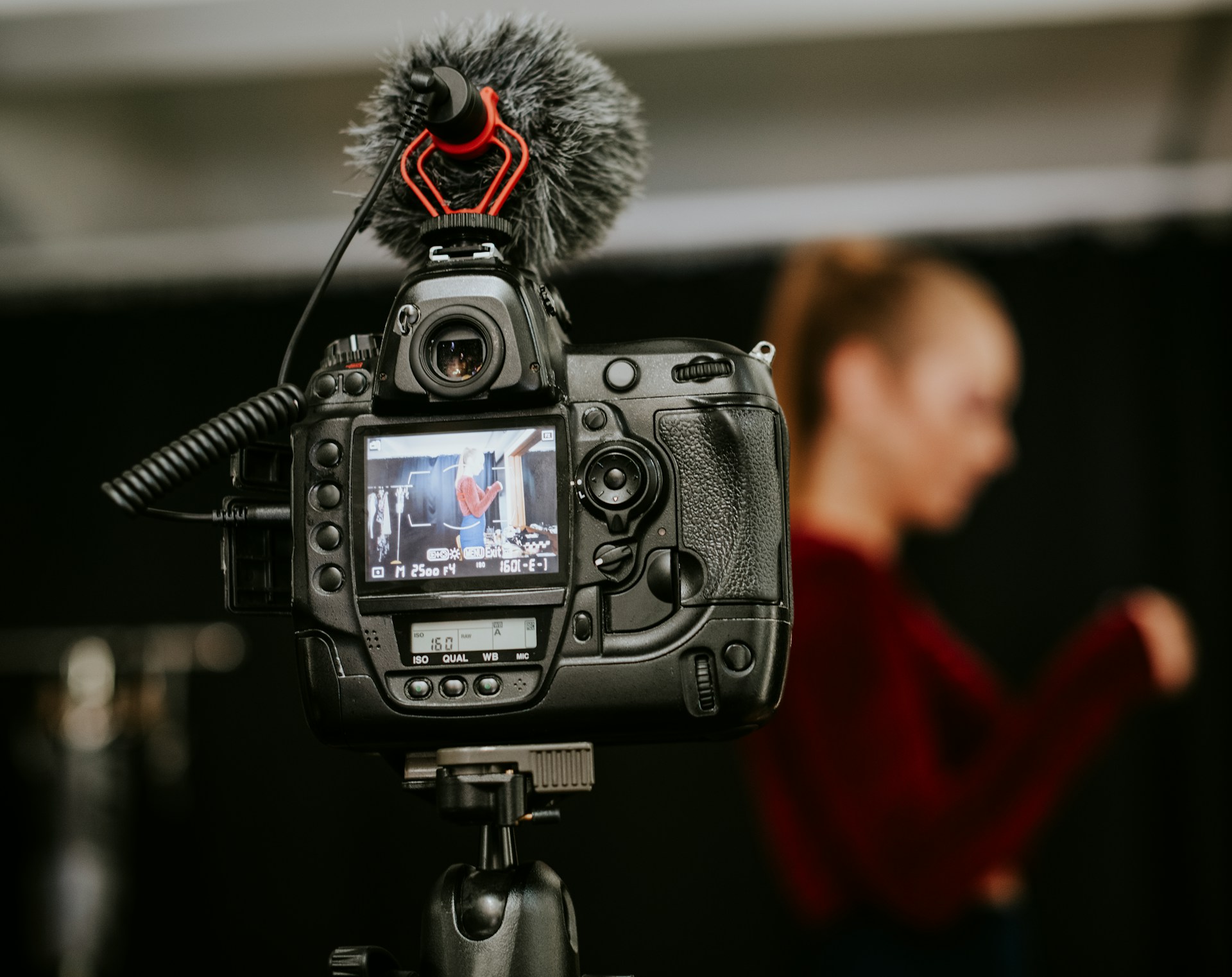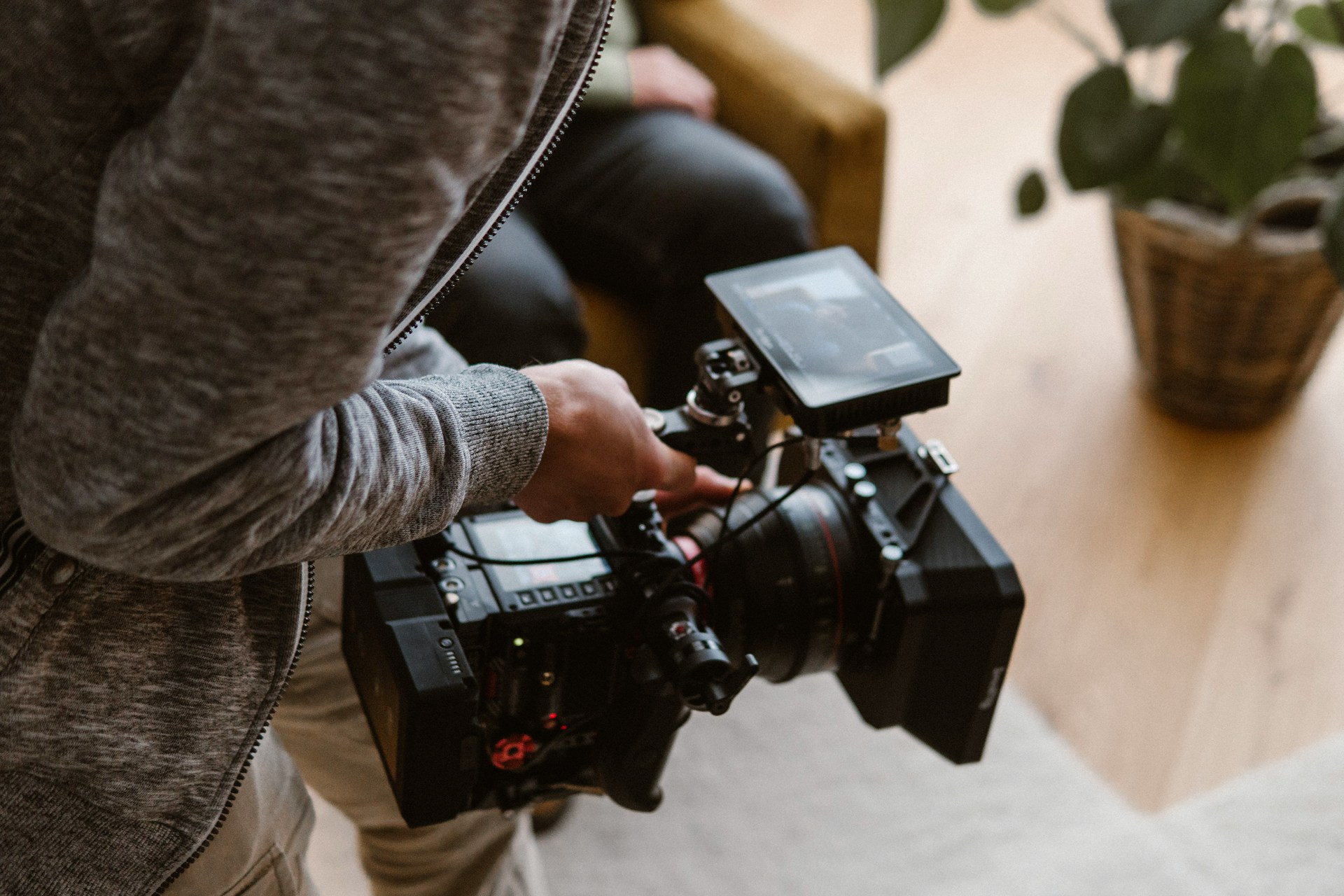Creating videos that stand out involves more than just capturing footage. Every shot is an opportunity to convey professionalism and creativity. Lighting, equipment, and editing all play crucial roles in producing videos with high-quality visuals that keep viewers engaged.
Maximising Lighting for Professional Looks
Mastering lighting techniques is essential for achieving professional-quality video production. Understanding the differences between natural and artificial lighting can help you make the right choice for your project. Natural lighting is cost-effective and can produce beautiful results, but it’s often unpredictable. The position of the sun changes throughout the day, impacting the consistency of light. In contrast, artificial lighting gives you more control over intensity and direction, ensuring consistent illumination across your scenes.
When working in small spaces, quick setup tips can ensure you optimise your lighting. Position your lights above and slightly in front of your subject to prevent harsh shadows. Desk lamps with adjustable necks can serve as makeshift lights by bouncing them off a white wall for an even glow. This technique softens the light, making it more flattering.
Using reflectors and diffusers effectively will make your lighting setup even more professional. Reflectors can redirect existing light to fill in shadows, adding dimension to your video. They come in various sizes and finishes, including silver, gold, and white, each providing different effects. Diffusers soften harsh light, creating a more natural look. A simple white sheet can serve as a diffuser, muting direct light for a balanced appearance.
Choosing the Right Equipment for the Job
Selecting the right equipment is a crucial step in video production that can make or break your project. Cameras and lenses vary widely in their features and capabilities. For general use, a camera with interchangeable lenses offers versatility. You can switch between wide-angle lenses for expansive shots and telephoto lenses for capturing details from afar.
Essential accessories like tripods, stabilisers, and external microphones help ensure smooth and professional filming. A sturdy tripod keeps your camera steady, eliminating shaky footage. Stabilisers are valuable when shooting on the move, providing fluid motion without jerks. External microphones capture clear audio, as built-in camera mics often pick up ambient noise.
Adapting equipment to different environments can enhance your video’s quality significantly. For outdoor shoots, consider weather protection for your gear and additional filters to manage sunlight exposure. In indoor settings, take advantage of available space to arrange your setup efficiently. Ensure you have backup batteries and memory cards, especially during extended shoots, to avoid interruptions and lost footage.
Enhancing the Visual Storytelling
Creating compelling visual storytelling requires effective framing and composition. Start with the rule of thirds, which divides the frame into a grid. Placing your subject along these lines creates a natural balance and draws attention to key elements. Symmetry can also be powerful, leading to visually satisfying images. Experimenting with perspective, like shooting from a high or low angle, adds depth and intrigue.
Incorporating movement into your shots can make them more dynamic and engaging. Panning the camera smoothly across a scene guides the viewer’s eye, creating anticipation. Zooming in or out slowly can emphasise a particular detail or reveal a broader context. Handheld shots add an element of realism and immediacy but be cautious to keep them steady, as too much shake can distract the viewer.
Colour grading is vital for consistency across your video. It involves adjusting colours to create a specific mood, whether dramatic, warm, or cool. A consistent colour palette ties your pieces together, ensuring they look cohesive and professional. Adjusting brightness and contrast also helps maintain visual continuity, enhancing the overall storytelling experience.
Efficient Post-Production Techniques
Efficient post-production can save time while ensuring a high-quality end result. Simple editing hacks streamline the process. Organise your clips into folders based on scenes or themes to speed up finding the right footage. Use keyboard shortcuts to navigate editing software quickly. Rough cut your video first, focusing on assembling the narrative. Fine-tune details once the main structure is in place.
Adding visual effects can enhance your video but must be done sparingly. Subtle transitions and overlays can add polish. However, it’s easy to overdo effects, which can overwhelm viewers and detract from the main message. Keep the focus on supporting the narrative, and only introduce effects where they serve a clear purpose.
Before publishing, thorough checks are essential. Review your video for any audio mismatches, visual errors, or abrupt transitions. Play the video back several times and consider feedback from peers. This final step ensures your video is polished and ready for your audience, demonstrating professionalism and attention to detail.
Conclusion
Crafting a video that captures attention and conveys your message is both an art and a science. By focusing on lighting, equipment, storytelling, and post-production, you create a product that resonates with your audience. Each step, from the initial setup to the final edit, plays a vital role in achieving the desired impact.
Explore professional video creation even further with On Air. Our team can help translate your ideas into stunning visual content, whether for corporate filming, marketing campaigns, or training films. Partner with us to bring your creative vision to life, establishing a strong connection with your audience through expertly crafted video content!






